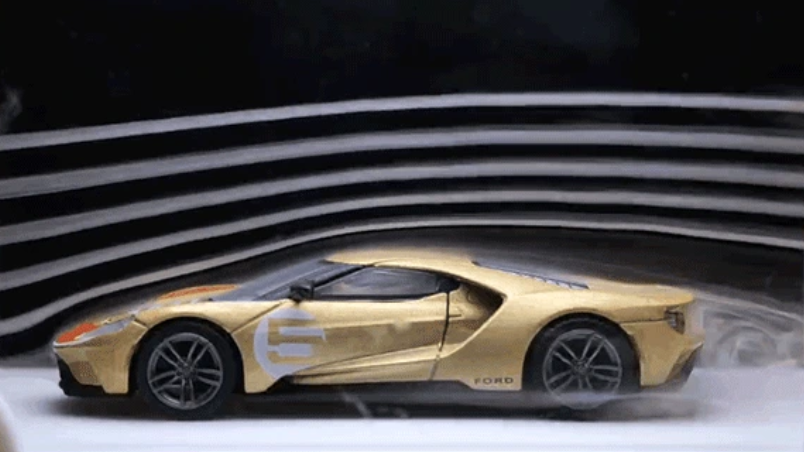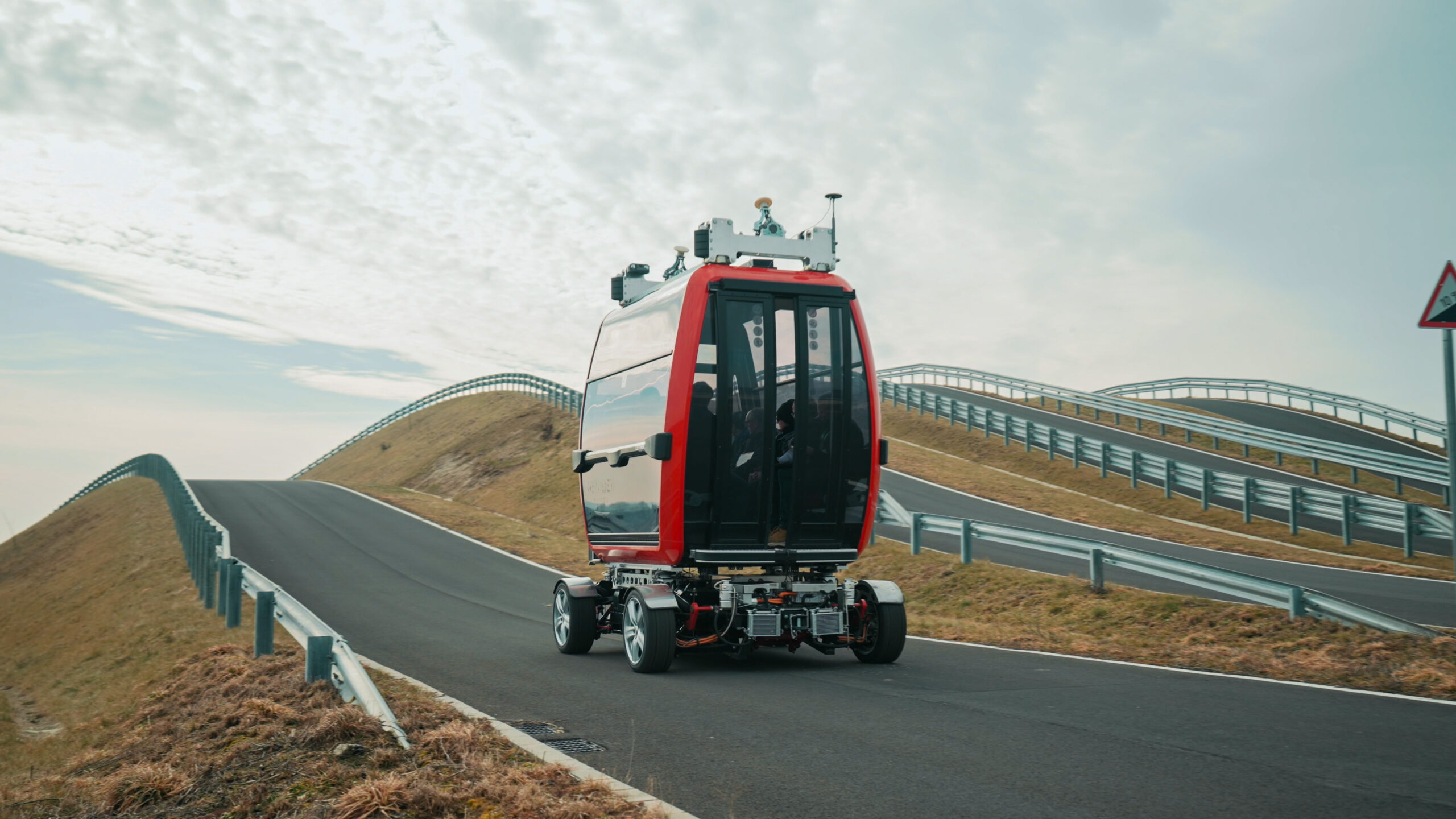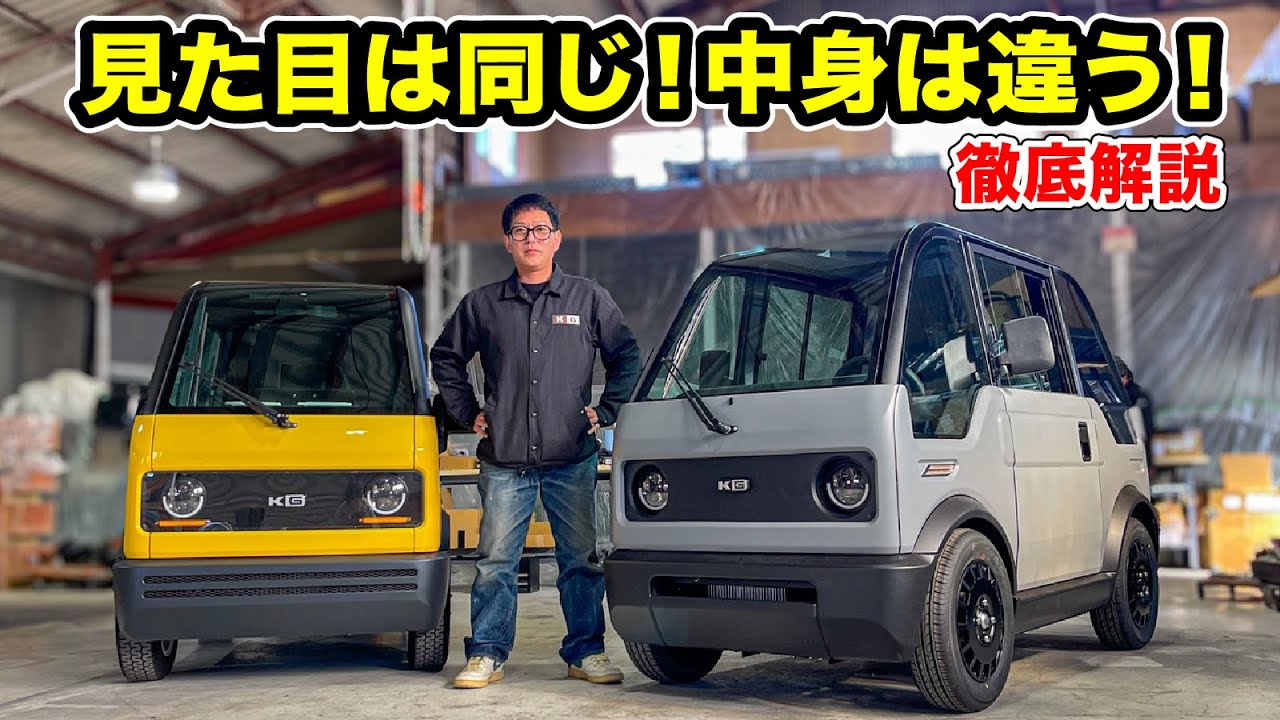Hitachi Construction Machinery Co. of Japan has initiated a trial of the first ultra-large full battery dump truck at First Quantum’s Kansanshi mine in Zambia, focusing on operational performance and battery efficiency.
Press release from Hitachi Construction Machinery Co. 01/07/24. Title by Superinnovators.
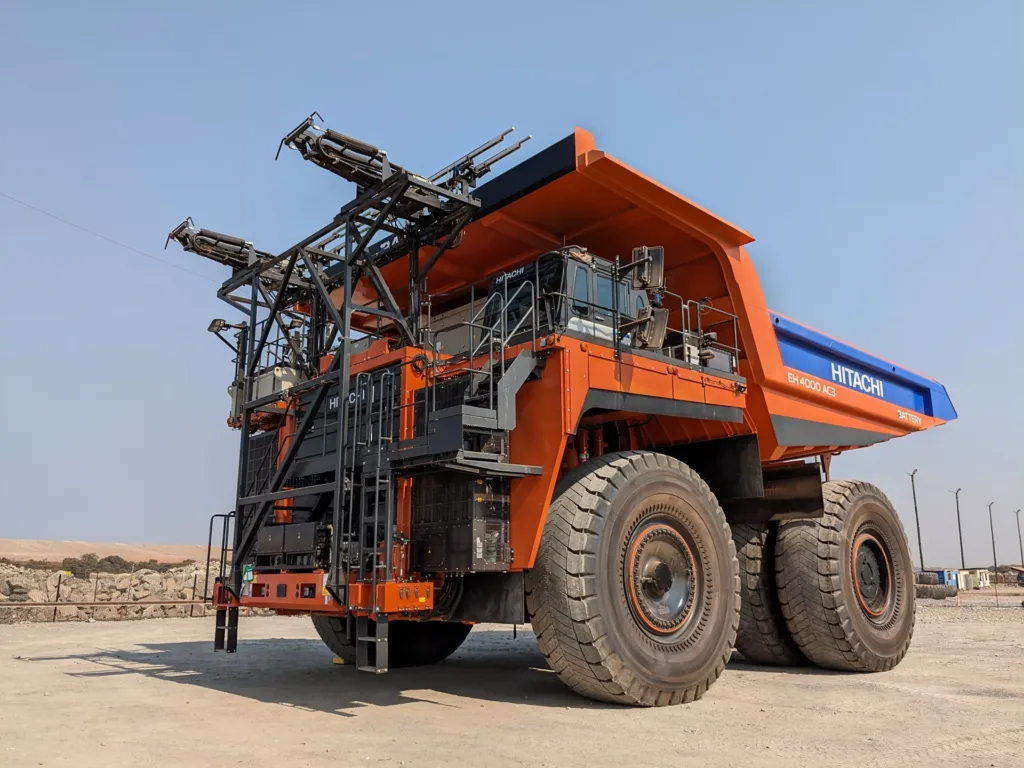
Tokyo, June 27, 2024 – Hitachi Construction Machinery Co., Ltd. (TSE: 6305, President and Executive Officer: Masafumi Senzaki; “Hitachi Construction Machinery”) is pleased to announce the commencement of the world’s first* technological feasibility trial of an ultra-large full battery rigid frame dump truck by an Original Equipment Manufacturer (“OEM”) operating at First Quantum Minerals Ltd (hereinafter “First Quantum”) Kansanshi copper and gold mine in the Republic of Zambia (“Zambia”).
The technological feasibility trial, which began in June 2024, is being conducted at First Quantum’s Kansanshi deep open-pit copper-gold mine, one of the company’s largest mine in Zambia.
The technological feasibility trial aims to verify the basic performance of operations required of a battery-powered dump truck – such as traveling, turning, and stopping – under actual operating loads, as well as the verification of battery charging and discharging cycles.
First Quantum are leaders in trolley system operations with in-house technology development and deployment, and at their Kansanshi copper and gold mine can provide Hitachi Construction Machinery with the infrastructure and facilities that are needed to test a full battery dump truck, such as proven overhead dynamic charging solutions and variety of haul circuits in an actual operational mining environment.
The use of Kansanshi infrastructure and the collaboration with First Quantum are the key differentiators, to fast tracking this evolving technology design which makes it the ideal practical and commercially viable solution.
Further to this, renewable energy accounts for 92%*2 of Zambia’s energy, and in addition to hydroelectric power generation, solar, wind, biogas, and other power sources from First Quantum are expected to be scaled up in the future.
The challenge of achieving true decarbonization is underway in Zambia, a country with abundant renewable energy requirements and will help Hitachi Construction Machinery to leverage this technology trial to further product development and broader applicational studies with customers around the world, thereby helping them to achieve their zero emissions goals.
*As of June 27, 2024, based on a survey conducted by Hitachi Construction Machinery of ultra-large dump trucks with a load capacity of 150 tons or more manufactured by OEMs
*2: “Renewable energy statistics” published by the International Renewable Energy Agency (IRENA)
Hitachi Construction Machinery’s Vice President and Executive Officer, President of Mining Business Unit, Eiji Fukunishi, stated “Mining companies around the world are working to reduce emissions.”
“As Original Equipment Manufacturer, it is our vision to provide solutions that can reduce our customers’ environmental footprint.”
“The battery dump truck represents the future, not only for the Hitachi Construction Machinery Group but for the mining industry as a whole, and we are pleased to establish this proving ground on an active mine site and work with First Quantum on advancing this zero emission solution.”
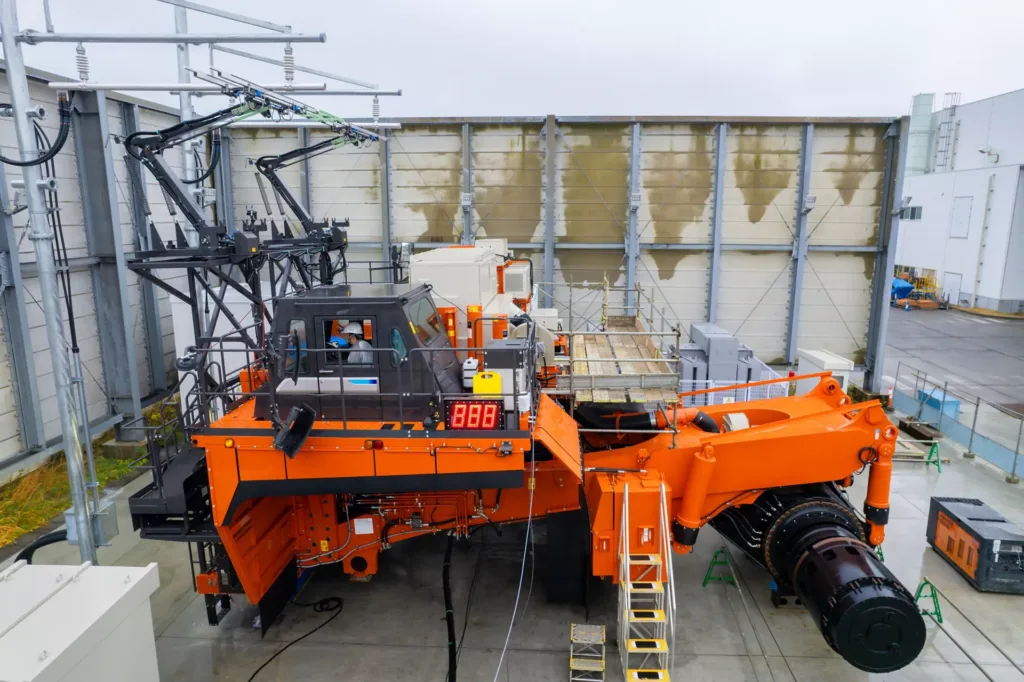
First Quantum’s Director Mining, John Gregory, stated “Battery zero emissions development with little to no impact on payload, production and fleet size is achievable with Trolley Assist and First Quantum have mastered this technology by working with 2,600V systems of Hitachi Construction Machinery to provide stable platforms with multiple trucks on the overhead line at the same time.”
“This system is operational, practical and economical feasible solution that will reduce emissions in mining for many years to come.”
The full battery dump truck was jointly developed with ABB Ltd. (“ABB”), a technology leader in electrification and automation.
Based on Hitachi Construction Machinery’s extensive experience with dump trucks equipped with trolley dynamic charging systems, the full battery dump truck is able to continuously operate practically in sites, by directly charging from the overhead lines and regenerative braking system without needing to stop and charging through the adoption of the battery system developed by ABB.
In addition, limiting the battery volume reduces the battery weight as a percentage of the overall vehicle weight and helps maximize the load capacity to display a high level of cost performance.
With environmental awareness on the rise in the mining industry, there is growing interest in the electrification of mining machinery as part of efforts to reduce greenhouse gas emissions.
To meet the high customer demand for the electrification of dump trucks in particular, which are operated in large numbers at mining sites, Hitachi Construction Machinery began collaborating with ABB in June 2021 to develop the full battery dump truck.
On March 1, 2023, Hitachi Construction Machinery signed a letter of intent (LOI) with First Quantum to establish a zero emission partnership.
Hitachi Construction Machinery completed the test machine version of a full battery dump truck, and on January 20, 2024, this test machine was shipped to First Quantum.
Features of the dynamic charging battery dump truck being jointly developed
The Hitachi Construction Machinery Group will accelerate its efforts to put the full battery dump truck into practical use while engaging in co-creation with our customers to help achieve net zero greenhouse gas emissions from mining machinery.
The assembly of the test unit was recently completed in Zambia, and the technological feasibility trial began now that the basic operation has been confirmed.
- Controls the initial and lifecycle costs
By drawing the electrical power from the dynamic charging system required during operation will limit the volume of batteries on the trucks, providing a sustainable solution.
In addition, the system aims to reduce the lifecycle costs and environmental impact through life cycle assessment by drawing electrical power from the overhead system while connected, simultaneously charging the battery in an appropriate manner to reduce the load and depth of discharge, maximizing battery life.
- Reduces the vehicle weight and maximizes the load capacity
Limiting the battery volume lessens the weight of the battery solution on the vehicle, maximizing the battery dump truck’s payload capacity.
- Dynamic charging solution to provide a higher rate of operation over static charging
The solution draws electrical power from the dynamic charging system during operation while simultaneously charging the battery, removing the need to stop the vehicle for recharging.
Therefore, achieving a higher rate of continuous operation to maintain productivity at site.
More info
https://www.hitachicm.com/global/en/news/topics/2024/24-01-17

